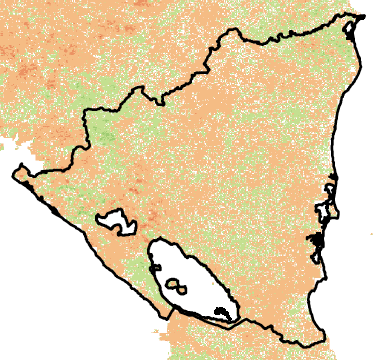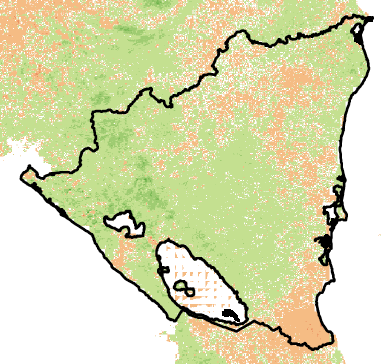Three new Nicaragua-focused projects
- Dr. Thomas Albright
- Jun 27, 2018
- 2 min read
Updated: Jan 28, 2023
Now that I'm back at UNR after my Fulbright/sabbatical in Nicaragua, I'm very excited that we have three distinct project areas developing with new collaborators. What's more is that as of this fall, there will be two new UNR PhD students in the lab getting involved in this work (more on these great students later).

The first project looks at what is going on in Nicaragua's system of protected areas. This network covers just under 20% of Nicaragua's land areas. However, this figure is really only valid on paper. As in many places, the management of protected areas often struggles with lack of resources and support (whether locally or from the national government). For these and other complex reasons, many of Nicaragua's protected areas are seeing extremely rapid forest loss, to the detriment of biodiversity, water quality, and indigenous peoples. In addition to documenting these changes, we want to better understand the drivers and provide information that can benefit future management and planning. So far, this work includes Jurgen Guevara (Centro Humboldt), Miguel Garmendia (UNA) and Tom Gillsepise and Chelsea Robins (UCLA).
The second project is looking at variability in the partitioning of the water budget across Nicaragua using remote sensing. We want to understand how runoff and evapotranspiration vary in space (different watersheds with different characteristics) and time (year-to-year variability), which we hope will yield insights valuable for considering changes in climate, land cover, and other factors. This is what new PhD student Rosangela Carreon is working on in collaboration with Gabriel Senay (USGS), Justin Huntington (DRI), and Jurgen Guevara (Centro Humboldt).
Nicaragua evapotranspiration during a dry year (2016; left) and a wet year (2017; right). Source: SSEBop (USGS), Carreon.

A third project seeks to better locate wintering sites and characterize habitat-use by migratory birds, including the Southwest Willow Flycatcher and Western Yellow-billed Cuckoos. These subspecies are endangered or threatened, and to better understand and protect them, we need to fill some gaping holes in our knowledge of what goes on during migration and non-breeding season. Mortality during these times is likely most responsible for declines in overall populations. In Nicaragua, most Willow Flycatcher ("WIFLs") wintering populations appear to be on the Pacific side, which is heavily transformed by people for agriculture. However, there are ways that these working landscapes can also support the needs of WIFLs. Spatially targeted management actions and supporting local communities with knowledge and resources may go a long way towards maintaining these populations. New LCB PhD student, Lauren Phillips will be using field data, remote sensing, geospatial models and undoubtedly take this project in some interesting directions with our collaborators Sarah Otterstrom (Paso Pacifico) and Mary Whitfield (Southern Sierra Research Station). This work will be funded by the USFWS Neotropical Migratory Bird Conservation Act.


































Comments